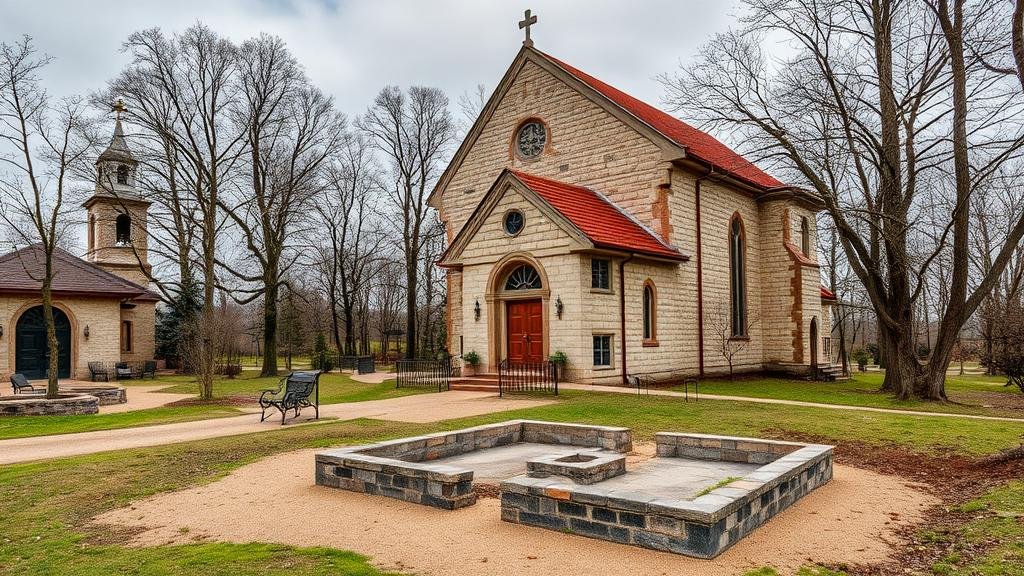Unearthing Religious Relics in Overlooked Church Grounds
Unearthing Religious Relics in Overlooked Church Grounds
The discovery of religious relics in church grounds often unravels significant historical narratives that extend beyond mere artifacts. These relics can provide insights into the religious practices, cultural norms, and socio-political dynamics of the times they originated from. While prominent ancient churches frequently draw attention for their grandeur, many lesser-known churches may conceal treasures that could offer a redefined perspective of religious history.
The Importance of Religious Relics
Religious relics are physical objects with historical significance that are often regarded as sacred by various faith traditions. can include items associated with saints, such as bones, clothing, and personal belongings, or objects used in sacred rituals. The veneration of relics is deeply rooted in various religious practices; for instance, in Christianity, relics of saints are believed to possess miraculous powers and provide a connection to the divine.
Data from the International Council on Monuments and Sites suggests that nearly 60% of saved artifacts from archaeological digs are religious relics, underscoring their importance in understanding human history. For example, the Discovery of the relics of St. Nicholas in Italy in the 11th century not only reaffirmed his status within the Church but also stimulated pilgrimage, influencing both worship and commerce in the region.
Unearthing relics requires a combination of careful archaeological techniques and historical research. The process typically includes the following steps:
- Site Preparation: Conduct preliminary research to identify churches with historical significance but lacking extensive archaeological studies. This may include examining local records, maps, and historical documents.
- Geophysical Surveying: Employ non-invasive methods such as ground-penetrating radar (GPR) to detect subsurface anomalies that may indicate the presence of burial sites or ancient structures.
- Excavation: Once probable locations are identified, excavation is conducted with precision to retrieve artifacts while preserving context. Stratigraphic excavation methods help maintain chronological order.
- Cataloging and Conservation: Upon retrieval, items are cataloged and assessed for preservation using specialized techniques to ensure their longevity.
Case Studies of Significant Discoveries
Numerous significant finds of relics have occurred in overlooked church grounds, illustrating the potential for discovery in even the most unassuming locations:
1. The Church of St. John in The Wilderness, India
In 2020, archaeologists uncovered a series of ancient stone carvings and fragments of religious artifacts during restoration work at this forgotten church. e relics date back to the 17th century and offer insight into indigenous religious practices intertwined with colonial influences, demonstrating the adaptability of local beliefs.
2. St. Augustine’s Church, Canterbury, England
The 2015 excavation of St. Augustine’s, a church frequently ignored due to its modest size, revealed an intricate collection of medieval altar pieces and pottery used in ecclesiastical rituals. These finds punctuated the churchs importance in the region’s religious practices, illustrating how smaller sites can contribute significantly to the broader historic narrative.
Challenges in Unearthing Relics
While the potential for discovery is vast, several challenges can arise during the process:
- Legal Restrictions: In many regions, excavation requires permissions from various authorities, which can be time-consuming and complex.
- Community Relations: Engaging with local communities is paramount. Some may be protective of their heritage and resistant to excavation efforts.
- Funding: Limited resources can hinder the scope of archaeological initiatives, often preventing thorough exploration and adequate conservation efforts.
Conclusion: The Value of Overlooked Religious Relics
The process of unearthing religious relics in overlooked church grounds holds immense potential for enriching our understanding of religious, cultural, and historical landscapes. e discoveries are not merely academic exercises; they can foster communal identity and cultural preservation. As stewards of history, archaeologists and local bodies must collaborate effectively to navigate the challenges that arise in this sensitive work.
Actionable Takeaways:
- Conduct community outreach to foster support for excavations.
- Engage in interdisciplinary collaborations that include historians, archaeologists, and local leaders to ensure well-rounded investigations.
- Allocate resources effectively to make the most of available funding and foster partnerships with educational institutions for support.
By recognizing the potential hidden treasures within overlooked church grounds, society can ensure that a broader array of religious narratives continues to be uncovered and preserved for future generations.


